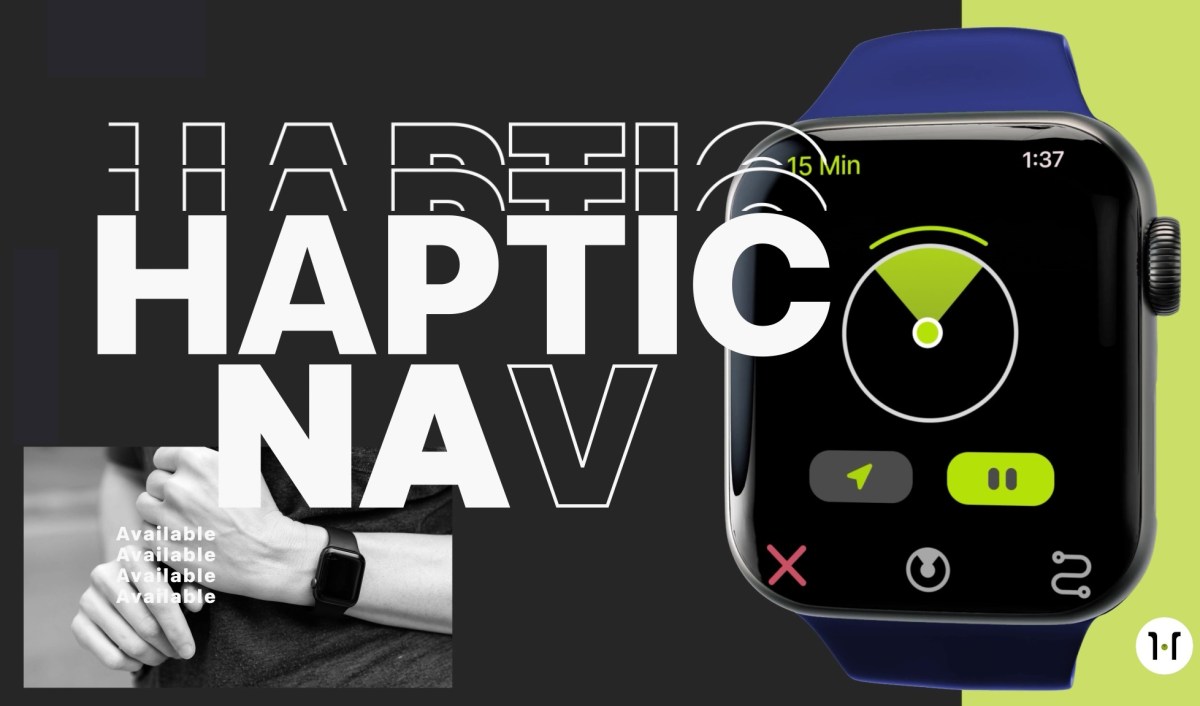Smartphones and navigation apps have become second nature these days. But for those with blindness and low vision, it’s not quite so convenient. Haptic has been building a non-visual, non-verbal way of telling people where to go, and they’ve decided it’s time to scale up and take it global. Haptic presented onstage today as part […]
© 2024 TechCrunch. All rights reserved. For personal use only.
Smartphones and navigation apps have become second nature these days. But for those with blindness and low vision, it’s not quite so convenient. Haptic has been building a non-visual, non-verbal way of telling people where to go, and they’ve decided it’s time to scale up and take it global.
Haptic presented onstage today as part of the Startup Battlefield at TechCrunch Disrupt 2024, showing their progress from concept to prototype to platform. The company got started in 2017 when, after a friend lost their sight in an accident, a group of colleagues began looking into ways someone could navigate without using visual or auditory cues.
Though there are plenty of screen-reading options and spoken directions in apps, these options aren’t always convenient or practical. But as co-founder and head of business Enzo Caruso pointed out, there are other interfaces we could be using. Touch, for instance.
“Why not receive info in a more robust, intuitive, and accessible way? Everyone can understand the sensation of touch. It’s global, it’s worldwide, it’s universal,” he said.
The advance Haptic has made — and patented, Caruso noted — is a way of using vibration and other tactile sensations to communicate the simple, intuitive idea that the user is going in the right direction. Your device will send a steady pulse when you’re on track, then quicken or intensify if you veer off course; they call it a “haptic corridor.” Though it’s hard to imagine, they say it’s intuitive enough to get after just a few seconds.
Image Credits:Haptic
The advantages of the approach are plentiful: It works in any language, requires no special hardware, and can be used to direct someone down a crowded city sidewalk, an open landscape, or even inside a building (though that part is still in development).
Originally this haptic corridor was communicated through a wearable of their own, but since then the company has embraced the progress made in the market.
“Technology advances while you’re advancing — and smartwatches got better. So, do you want to be in competition with the Googles and Apples out there… or do you want to have them as allies? You can take your SDK from thousands of users to billions of users,” said Caruso.
CEO and co-founder Kevin Yoo explained that this year marked the company’s change in focus from proving out the product to putting it in as many hands as possible. A partnership with the likes of Google or Uber would certainly go a long way toward doing that.
Imagine, he said, not having to even take your phone out of your pocket to walk straight to your Uber at the airport, or finding your way through a crowded venue by the pulse of your smartwatch. Anyone might find that useful, in addition to people with vision impairments for whom it may be an everyday navigation tool.
Here’s one user, James, getting around his neighborhood with the help of the app:
“Google and Apple, telecoms, Uber, governments… all of this is coming together into a common ground,” said Yoo. With the capabilities of today’s smartwatches and phones, combined with a new software focus at Haptic on “hyper-accurate location,” they hope to introduce indoor navigation and integration with other services.
Haptic currently partners with Waymap, Cooley, WID, and Infinite Access, and are in talks with many more. They just landed a million-dollar contract with Aira, an app that allows people with vision impairments to get live assistance from a sighted helper via their phone. The haptic navigation would reduce the need for that assistant to give step-by-step directions, instead just dropping pins on a map or providing other services.
This, and not monetizing their own app, is how they intend to make money, Yoo emphasized: “We have a free app available to the world, live in 31 countries right now… and we have the licensing and integration model — that’s the business.”
The company is mid-raise and hoping to close a funding round that will let them pursue bigger partners (the Ubers and T-Mobiles of the world) in earnest.

Leave a Reply